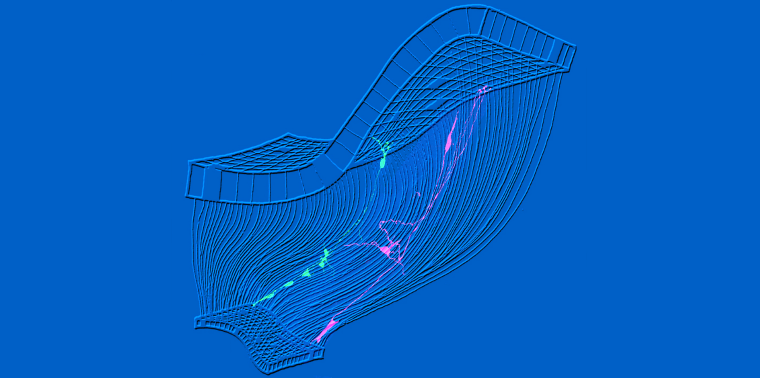Mutations of a certain gene may contribute to autism by interfering with normal brain development, a new study suggests.
The gene, which is mutated in some people with autism, affects cells that set up the framework for the organization of a fetus’s developing cortex, according to the study published in Neuron.
Those cells, called radial glia, can be viewed like the framing timbers of a house under construction. If the house’s framing is off, then the rest of the construction will be affected.
“Each of the radial glia divide and make neurons and serve as the guide for where those neurons go,” said study coauthor Eva Anton, a professor at the University of North Carolina Neuroscience Center. “They enable the organization of neurons in the brain that underlies functional circuits.”
Disruption of this early organization, “may be one of the contributors causing some of the brain malformations associated with autism,” Anton said.
While previous research identified defects in the brains of people with autism through MRIs and autopsies, scientists haven’t fully figured out what mechanisms might explain how those malformations developed. Risk factors for autism are not entirely known, but causes may include a combination of genetic mutations and environmental factors, including children who are born to older parents, research suggests.
Understanding how autism develops would help researchers who are looking for treatments and might also lead to ways to diagnose the condition earlier. About 1 in 40 children in the United States are on the autism spectrum, according to the latest government estimates.
Looking for an explanation for the observed abnormalities, Anton and his colleagues ran experiments in mice that were engineered to have mutations in a gene that is also found in human beings, called Memo1.
The cerebral cortex, which in humans is responsible for higher brain functions such as speech, perception, long-term memory and judgment, is the outer layer of the brain.

Normally, as the cortex is developing, brain cells called radial glia appear at the bottom of the structure in a regularly spaced pattern. The glia sprout fibers that grow from the bottom to the top of the cortex and they also create the nerve cells that will eventually populate this part of the brain. Once new nerve cells are born, they use the fibers to climb to the spots in the cortex where they are destined to reside.
When everything works correctly, the end result is six highly organized distinct layers of nerve cells.
When the Memo1 gene was mutated, the radial glia, instead of growing single fibers that went from the bottom to the top of the cortex, sprouted extra fibers that went willy-nilly in a variety of directions. That led to nerve cells sometimes ending up in the wrong place and layers that were disorganized.
While this mutation isn’t found in all people with autism, studying its effects “tells you where in development things might have gone wrong and could have led to brain malformations that could trigger autism,” Anton said. “Patients with mutations in Memo1 tend to have autism spectrum disorder, intellectual disabilities and some have epilepsy.”
When does autism develop?
The new study shows how the mutation of a gene that has been linked to autism can lead to localized defects in the brain, said Dr. Nenad Sestan, a brain development specialist and a professor of neuroscience at the Yale University School of Medicine.
“These radial glia are the stem cells of the brain,” Sestan, who was not involved in the new study, said. “They create all the neurons in the cortex and guide them to their final destination.”
Genetic studies have focused on hundreds of genes that could be involved in the development of autism, said Alex Kolodkin, an expert in neural development and the Charles J. Homcy and Simeon G. Margolis professor of neuroscience at the Johns Hopkins School of Medicine. “And a significant fraction end up as being involved,” he said.
The issue, he said, is now figuring out how to link the genes known to be associated with autism to the defects in brain wiring.
The research also “suggests that some of the disruptions that may contribute to autism could be happening earlier than we thought — in the first three months of fetal development,” Sestan said.
